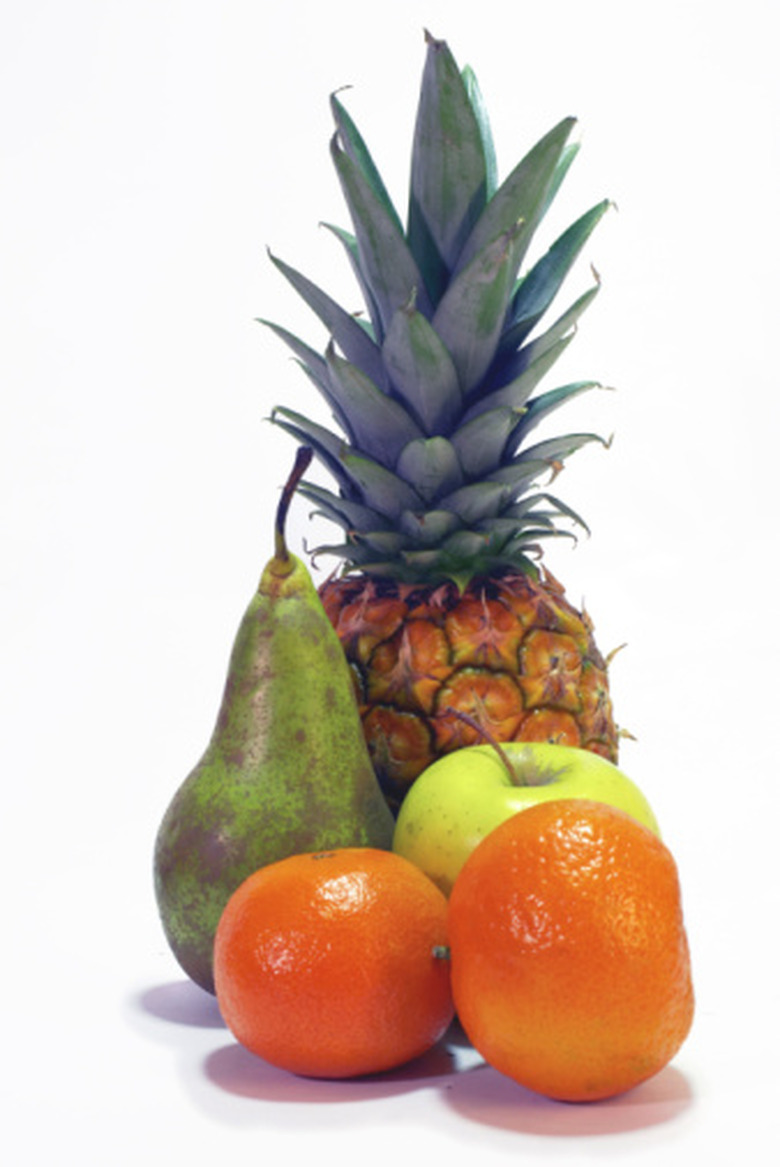Topics For A Science Project: What Fruit Has The Most Acid?
"What Fruit Has the Most Acid?" makes for an interesting science fair topic. Since fruits have varying concentrations of naturally occurring acids, determining which is most acidic yields an understanding of the overall characteristics of fruit. To run these student experiments, several inexpensive pieces of test equipment will be needed. As with any procedure, adult assistance is recommended if the experiment is run by a minor.
Obtaining the Fruit and Equipment
Obtaining the Fruit and Equipment
First, obtain various types of fruits. Some common ones would be oranges, apples, lemons, cherries and pears. Second, obtain pH indicator paper, called litmus paper. PH is a measure of how acid or how alkaline a liquid is. PH litmus paper is available at any pool chemical supply house. Along with the paper, a color chart is usually provided. After the paper is exposed to the liquid, it changes color. Compare the color the litmus paper changes to to a pH range scale on the color chart. Each color is assigned a number on the chart, called the pH number.
Running the Experiment
Running the Experiment
Cut one fruit apart and soak a piece of litmus paper in its juice. After the paper stops changing color, compare the color to the chart given. Write down the name of the fruit and its corresponding pH number. Repeat the experiment with other fruits, using a fresh piece of litmus paper for each fruit. Make sure you wash the cutting board so the juice from one fruit does not contaminate the juice of another fruit, rendering your data collection process inaccurate.
Analyzing the Data
Analyzing the Data
Its helpful to develop a chart, listing the fruit in one column and its pH in the next column. Arrange the fruit from the lowest pH at the top to the highest pH at the bottom. According to Elmhurst College, the lower the pH, the more acidic the liquid. To put this into perspective, battery acid, which is sulfuric acid, has a pH of 1. Lemon juice has a pH of about 2 and vinegar has a pH of about 3. Water, which is neutral, has a pH of 7. Anything above 7 enters the alkaline range, which is the "opposite" of an acid.
Presenting the Experiment
Presenting the Experiment
Develop a graph from the chart, listing fruits along the "X" axis and pH along the "Y" axis. Draw a dot where the pH level of the fruit lies. If you need assistance developing a graph, a person who is well-versed in drawing graphs (such as a school teacher) can help you. By drawing a graph, your audience can visually see, at a glance, the pH levels of different fruits. As you are conducting the experiment, take photographs. Explain in captions what you are doing in each step.
Cite This Article
MLA
Oldhand, Tony. "Topics For A Science Project: What Fruit Has The Most Acid?" sciencing.com, https://www.sciencing.com/topics-science-project-fruit-acid-8553152/. 24 April 2017.
APA
Oldhand, Tony. (2017, April 24). Topics For A Science Project: What Fruit Has The Most Acid?. sciencing.com. Retrieved from https://www.sciencing.com/topics-science-project-fruit-acid-8553152/
Chicago
Oldhand, Tony. Topics For A Science Project: What Fruit Has The Most Acid? last modified August 30, 2022. https://www.sciencing.com/topics-science-project-fruit-acid-8553152/
